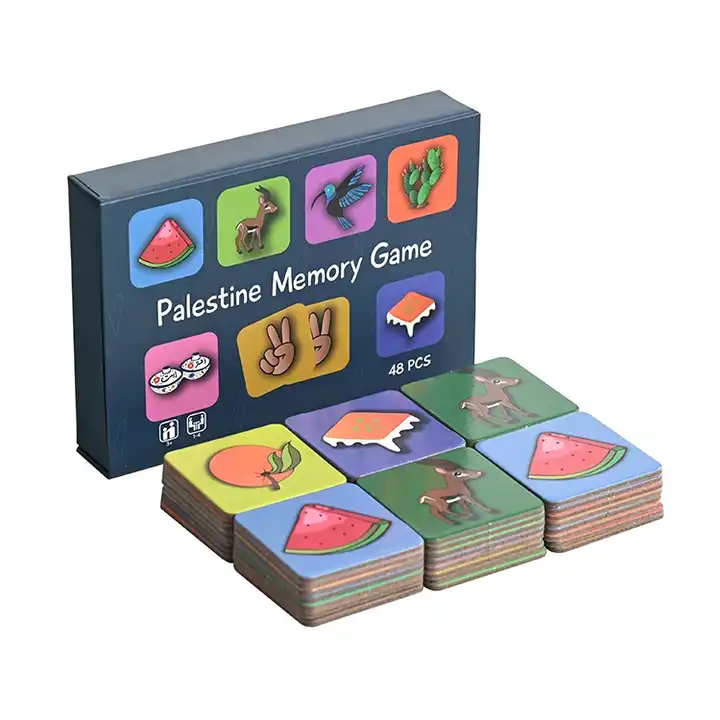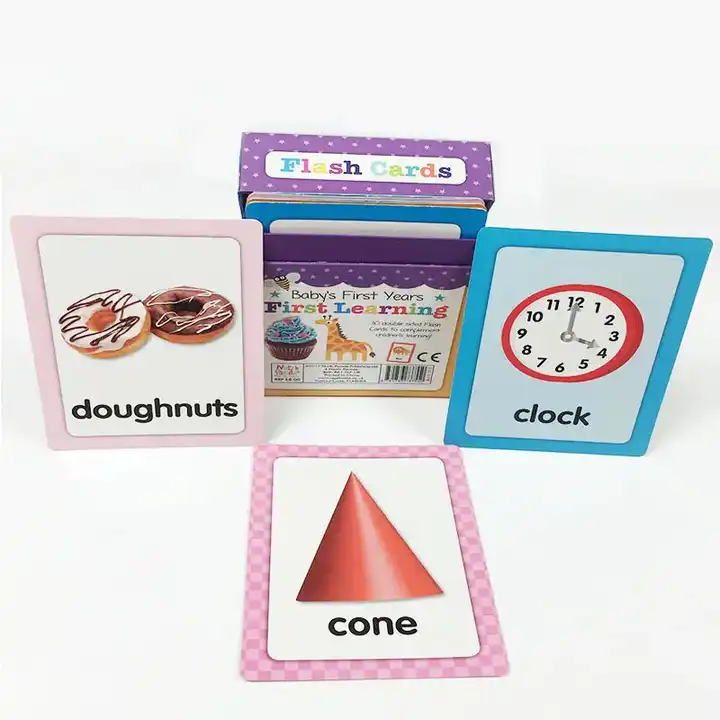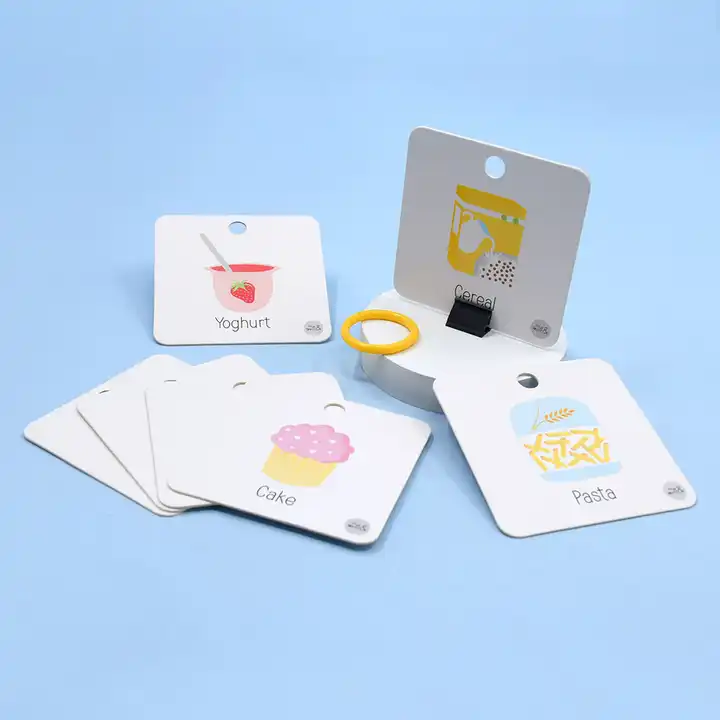Content Menu
● Introduction
● What Are Flashcards?
>> Types of Flashcards
>> The Science Behind Flashcards
● Benefits of Using Flashcards
>> Enhancing Memory with Flashcards
● How to Create Flashcards
>> Step 1: Gather Materials
>> Step 2: Identify Key Information
>> Step 3: Write Your Flashcards
>>> For Physical Flashcards:
>>> For Digital Flashcards:
>> Step 4: Organize Your Flashcards
>> Step 5: Use Your Flashcards Effectively
● Tips for Making Effective Flashcards
● Incorporating Flashcards into Your Study Routine
>> Set Clear Goals
>> Create a Study Schedule
>> Use Group Study Sessions
>> Track Your Progress
>> Combine with Other Study Methods
● Advanced Techniques for Using Flashcards
>> Use Cloze Deletion
>> Incorporate Audio Elements
>> Gamify Your Learning
>> Create Themed Sets
● Conclusion
● Frequently Asked Questions
>> 1. What materials do I need to create physical flashcards?
>> 2. Can I create digital flashcards?
>> 3. How should I organize my flashcards?
>> 4. How often should I review my flashcards?
>> 5. What should I include on my flashcard?
● Citations:
Introduction
Flashcards are a versatile and effective study tool that can enhance learning and retention of information. They consist of a card with a question or keyword on one side and the corresponding answer or explanation on the other. This method of active recall helps reinforce memory through spaced repetition, making it particularly useful for students and lifelong learners alike. In this article, we will explore how to create flashcards, the benefits of using them, tips for maximizing their effectiveness, and various strategies to incorporate them into your study routine.

What Are Flashcards?
Flashcards are simple yet powerful learning aids. They can be physical cards made from paper or index cards, or digital versions created using various apps and software. The fundamental concept behind flashcards is straightforward: they facilitate self-testing by prompting the learner to recall information actively.
Types of Flashcards
1. Physical Flashcards: These are traditional cards made from paper or cardstock. They can be handwritten or printed.
2. Digital Flashcards: These are created using apps like Quizlet, Anki, or even Microsoft Word. They allow for easy editing and sharing.
3. Visual Flashcards: Incorporating images or diagrams alongside text to cater to visual learners.
The Science Behind Flashcards
Research in cognitive psychology supports the effectiveness of flashcards as a learning tool. The process of retrieval practice—actively recalling information—has been shown to strengthen memory retention more than passive review methods like re-reading notes. This phenomenon is often referred to as the "testing effect." Furthermore, spaced repetition, which involves reviewing information at increasing intervals, helps combat the forgetting curve, ensuring that knowledge is retained over time.
Benefits of Using Flashcards
Using flashcards offers several advantages:
- Active Recall: Encourages learners to retrieve information from memory, which strengthens neural connections.
- Spaced Repetition: Helps in revisiting information at intervals, which is proven to enhance long-term retention.
- Customizable: Learners can tailor flashcards to their specific needs, focusing on areas that require more attention.
- Portable: Easy to carry around, allowing for studying on-the-go.
- Engaging: The process of creating and using flashcards can make studying more interactive and enjoyable.
Enhancing Memory with Flashcards
To further enhance memory retention while using flashcards, consider employing techniques such as:
- Chunking: Break down complex information into smaller, manageable chunks. For example, when learning a language, group vocabulary words by theme (e.g., food, travel).
- Interleaving Practice: Mix different subjects or topics while studying with flashcards. This approach helps you learn to apply knowledge in varied contexts.
- Dual Coding: Combine verbal information with visual elements. For instance, when studying anatomy, include diagrams alongside definitions of body parts.
How to Create Flashcards
Creating effective flashcards involves several steps:
Step 1: Gather Materials
To make physical flashcards, you need:
- Index cards or cardstock
- A pen or marker
- Optional: colored pens, stickers, or images for decoration
For digital flashcards:
- A computer or smartphone
- Flashcard app (e.g., Quizlet, Anki)
Step 2: Identify Key Information
Before writing on your flashcards, identify the key concepts you need to learn. This could include:
- Definitions
- Important dates
- Formulas
- Vocabulary words

Step 3: Write Your Flashcards
For Physical Flashcards:
1. Front Side: Write a question, keyword, or prompt related to the material you are studying.
2. Back Side: Write the answer or explanation. Consider adding mnemonic devices or memory triggers to aid recall.
For Digital Flashcards:
1. Open your chosen app and create a new set of flashcards.
2. Input your questions and answers as you would on physical cards.
3. Customize with images if desired.
Step 4: Organize Your Flashcards
Organizing your flashcards can enhance your study sessions:
- Group them by subject or topic.
- Sort them by difficulty level (easy, medium, hard).
- Create a "missed" pile for questions you struggle with.
Step 5: Use Your Flashcards Effectively
To maximize the effectiveness of your flashcards:
- Review Regularly: Schedule regular review sessions using spaced repetition techniques.
- Shuffle Your Cards: Change the order in which you review them to ensure you are not just memorizing sequences.
- Study in Different Locations: This helps reinforce memory by associating information with various contexts.
Tips for Making Effective Flashcards
1. Be Concise: Keep information brief and focused on key concepts. Avoid cluttering your cards with excessive text.
2. Use Visuals: Incorporate images or diagrams where applicable to aid understanding and retention.
3. Make It Fun: Use colors and drawings to make your flashcards visually appealing; this can help maintain interest during study sessions.
4. Test Yourself: Regularly quiz yourself with your flashcards to reinforce learning.
Incorporating Flashcards into Your Study Routine
To fully benefit from flashcard usage, integrate them into your overall study routine effectively:
Set Clear Goals
Determine what you want to achieve with your study sessions using flashcards. Are you preparing for an exam? Learning new vocabulary? Setting specific goals helps maintain focus.
Create a Study Schedule
Establish a consistent study schedule that includes time for reviewing your flashcards. Consistency is key in reinforcing knowledge over time.
Use Group Study Sessions
Consider studying with peers who also use flashcards. This allows for collaborative learning—quizzing each other can provide new insights and reinforce understanding.
Track Your Progress
Keep track of which cards you find challenging versus those you master easily. This will help you adjust your study focus accordingly.
Combine with Other Study Methods
While flashcards are highly effective on their own, combining them with other study methods—such as summarizing notes or teaching concepts to someone else—can further solidify understanding.
Advanced Techniques for Using Flashcards
Once you're comfortable with basic flashcard creation and usage, consider these advanced techniques:
Use Cloze Deletion
Cloze deletion involves creating fill-in-the-blank style questions on your flashcards. For example:
- "The capital of France is ______."
This technique encourages deeper engagement with the material as it requires active recall rather than simple recognition.
Incorporate Audio Elements
For language learners or subjects requiring pronunciation (like music theory), consider adding audio clips to digital flashcards that allow sound playback.
Gamify Your Learning
Turn your study sessions into games by setting challenges such as timed quizzes or competitions with friends using your flashcard sets.
Create Themed Sets
Instead of mixing topics randomly, create themed sets that focus on specific areas within a subject (e.g., all biology terms related to cellular processes).
Conclusion
Creating and using flashcards is an effective study strategy that can significantly enhance learning outcomes across various disciplines. By following the steps outlined in this article—gathering materials, identifying key information, writing clear and concise content, organizing effectively, utilizing them regularly, and incorporating advanced techniques—you can harness the full potential of flashcards as a powerful learning tool.
In summary, whether you're preparing for exams, learning a new language, mastering complex concepts in science or history, or simply trying to retain important information for personal development, flashcards can be tailored to fit your unique learning style and needs.

Frequently Asked Questions
1. What materials do I need to create physical flashcards?
You will need index cards or cardstock and a pen or marker. Optional items include colored pens and stickers for decoration.
2. Can I create digital flashcards?
Yes! You can use various apps like Quizlet or Anki to create digital flashcards that can be easily edited and shared.
3. How should I organize my flashcards?
You can organize them by subject or topic and sort them by difficulty level (easy, medium, hard). Creating a "missed" pile for challenging questions is also helpful.
4. How often should I review my flashcards?
Regular review sessions are recommended using spaced repetition techniques to enhance long-term retention.
5. What should I include on my flashcard?
Include a question or keyword on one side and the answer or explanation on the other side. Consider adding mnemonic devices or visuals for better recall.
Citations:
[1] https://www.youtube.com/watch?v=iENjK9SRXPo
[2] https://github.com/okaychen/okaychen.github.io/blob/master/content.json
[3] https://create.microsoft.com/en-us/learn/articles/create-printable-flashcards-word
[4] https://github.com/jueqingsizhe66/XEmacs.d/blob/develop/README.md
[5] https://flashcardsandstationery.com/how-to-make-flashcards-step-by-step/
[6] https://www.cnblogs.com/apachecn/p/18210284
[7] https://www.youtube.com/watch?v=YiMXwU8Mepw
[8] https://ia800600.us.archive.org/5/items/ittushu-2470/%E6%96%87%E6%B3%89%E5%AD%A6%E5%A0%82%E7%94%B5%E5%AD%90%E4%B9%A6-163/HTML5+CSS3+JavaScript%E9%A1%B9%E7%9B%AE%E5%BC%80%E5%8F%91_djvu.txt
































